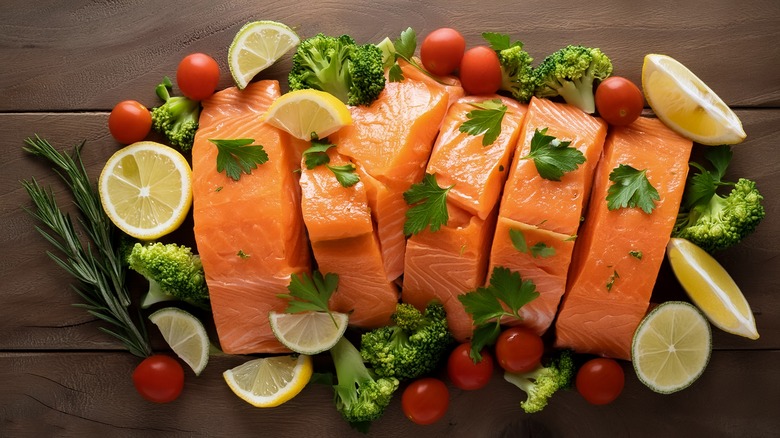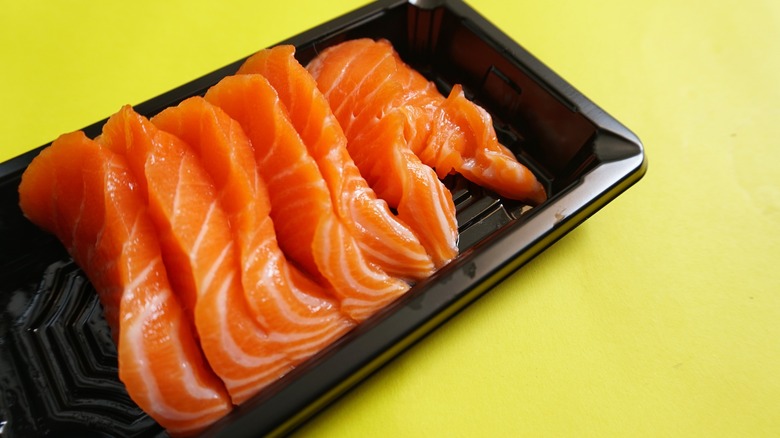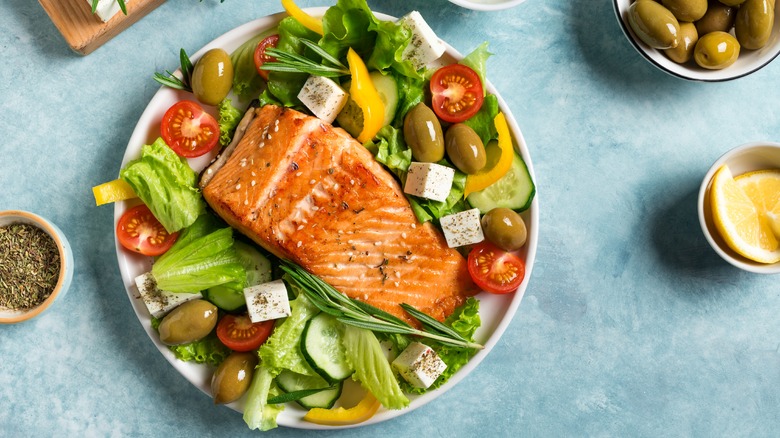King Vs Sockeye Salmon: Is There A Difference?
If you've ever visited your local fishmonger to pick up a few cuts of salmon for dinner, you've probably noticed that this succulent fish comes in a surprising number of varieties. All salmon is packed with protein, omega-3 fatty acids, and other essential nutrients, but there are some big differences between species when it comes to size, flavor, and texture. Two of the most popular types of salmon that you're likely to come across are king and sockeye. In order to pick out the best salmon at the grocery store, it helps to know the differences between these fish.
Despite the fact that both sockeye and king salmon are native to the frigid waters of the Pacific Northwest and that they are very nutritious, there are few other similarities between these species. Perhaps the biggest difference (literally) is their size. King salmon can range anywhere from to 10 to 30 pounds or more, while sockeye salmon weighs in at only four to eight pounds. There's also a large price discrepancy between king and sockeye salmon due to a number of different factors.
King salmon is more succulent
King salmon, also known as Chinook salmon, is the biggest of the Pacific salmon species. In extreme cases, they can grow to be over 100 pounds. A big fish means big cuts of meat, and the extra fat content means each bite is buttery and delicious. This makes king salmon ideal for grilling, smoking, or even making sushi. This species has a milder flavor compared to others, but is still very rich and tasty, which makes it a good choice for those new to seafood.
Unfortunately, the sheer decadence of king salmon means that it is in very high demand, which leads to high price tags. A 1-pound filet of king salmon goes for around $50, so if you do try to cook with it, read our guide to all things salmon first. King salmon is also expensive due to its rarity. Less than 10 million pounds of this fish were caught in 2019. On the other hand, almost 300 million pounds of sockeye were caught that year, making it a much more accessible option.
Sockeye salmon is flavorful and affordable
They may only weigh up to 15 pounds, but what sockeyes lack in size, they make up for in color and flavor. Also known as red salmon, this fish is notable for its vibrantly-hued flesh and its bold flavor. Sockeye is much less fatty than king salmon, and its firm texture holds up well to most cooking methods as long as you avoid cooking mistakes like starting to cook it flesh-side down (instead of skin-side) and cooking it for too long. The extra toughness of sockeye makes it a great option for dishes that require a fish that won't fall apart easily. That said, it's less forgiving when overcooked so it's important to keep an eye on it while it's over heat.
Compared to king, sockeye has a stronger, gamier, more fishy flavor, so it tends to be preferred by those who love seafood and want their fish to shine as the star of a meal, such as in a salmon burger. At around $20 per pound, sockeye salmon is also more affordable than some other options. There are several other salmon species out there for you to try cooking with, but the luxurious fattiness of king and the robust color and flavor of sockeye should give you plenty of recipes to play with in the meantime.


